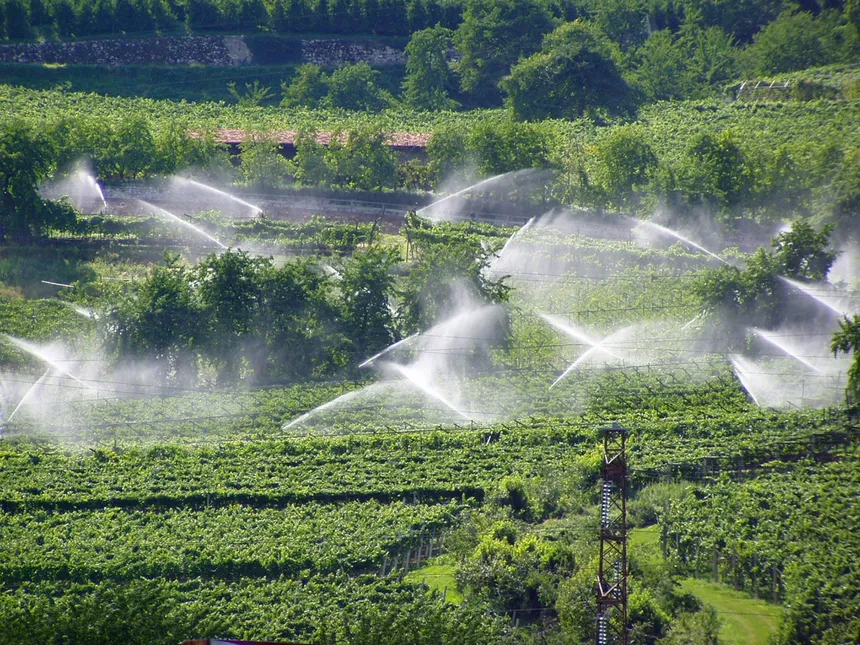Sprinkler irrigation was initially invented for home lawn care and garden water use. Even today, the rhythmic ‘chk-chk-chk’ sound of an impact sprinkler is iconoclastic of hot summer days, green lawns, and children playfully cooling off in lawn sprinklers.

What Is Sprinkler Irrigation?
Sprinkler irrigation is any irrigation that uses a pressurized system to apply water in a method that mimics rainfall to the soil surface.
Water is delivered to a farmer’s fields through a network of pipes or hoses, and the water is usually pressurized using a pumping system. Irrigation sprinkler systems may be temporary, movable or permanent.
In the United States, nearly 4.4 million acres are irrigated via some method of spray, aka sprinkler irrigation, not including center pivot or micro-spray irrigation, according to the 2018 United States Department of Agriculture (USDA) report “Sprinkler Irrigation in the Fields and Open.”

Sprinkler irrigation is widely used because it is versatile, adaptable to almost all crops, and affordable. But it’s not a perfect irrigation system. Spray irrigation is one of the most inefficient watering methods, wasting approximately 30 to 50% of the water applied through run-off and evaporation. Only flood irrigation is a more potentially inefficient method of irrigation crops, whereas systems like drip irrigation and sub-irrigation use much less water to achieve effective application rates.
This new way of delivering water in a manner replicating rain had apparent implications for farmers. By 1932 the impact sprinkler head, which distributed even more water over a wider area, was invented by a California fruit farmer. In time, other technology in sprinkler systems like oscillating sprinklers, pop-up risers on timers, and agricultural-specific advancements like center pivot systems and low-pressure micro-sprinklers would give farmers many options in spray irrigation systems.


